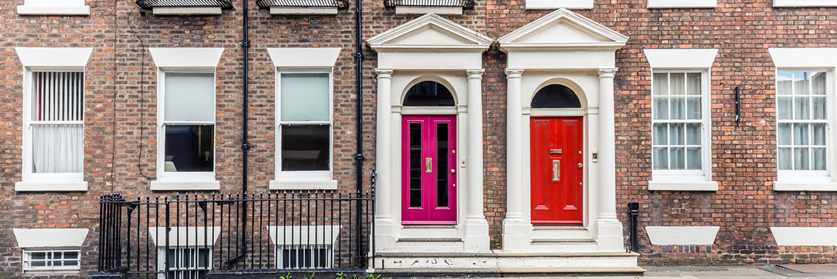25
April 2019
North-South Divide in Urban House Sales
Property sales in southern British cities have fallen by 13% since 2015, while sales in northern cities have risen by 6% over the same period.
According to the latest figures from Zoopla, house prices are also growing at a faster rate in the north of the country than in the south. The Zoopla index looks into house prices and sales across 20 of the UK’s largest cities, from Aberdeen down to Bournemouth.
The latest data revealed that Liverpool had both the highest three-year sales growth and the highest annual house price growth of any city on the list. Transactions in the city were up by almost 19% since 2015, while house prices grew by 5.7% in the year up to March. The average price of a home in Liverpool now stands at £122,100. This pales in comparison to the average house price in London, which is currently £482,800. The average house price growth of all UK cities was just 1.7%, the lowest growth rate since May 2012.
In the south, property sales in both London and Cambridge are down by 20% from three years ago. Property sales in southern English cities on average are down by 13% over the same period. Oxford had the lowest annual growth, with house prices falling by 0.6%, while Bristol had the strongest growth of cities in the south, with prices there rising by 2.2% since last year.
Zoopla said that the slowdown in housing sales in the south of the country was down to various factors. Prospective buyers are being put off seeking a mortgage and entering the housing market, especially in the capital, due to high prices and increased stamp duty costs. Brexit uncertainty has also been cited as a factor in the downturn.
“The housing cycle continues to unfold at different speeds across UK cities,” said Richard Donnell, research and insight director at Zoopla. “While sales in London are down 20% on 2015 levels, prices are flat over the last 12 months. The signs of firmer pricing we recorded last month have continued into March with fewer London postcodes registering price falls. More realistic pricing and better value for money for potential buyers means sales volumes have stabilised.
“Cities across southern England are 18-24 months behind London. House prices have increased significantly ahead of earnings in recent years causing the rate of price growth to now slow due to weaker demand and lower sales volumes. Price growth is set to remain weak as affordability levels start to re-align with what buyers are prepared to spend.
“House prices and sales volumes continue to increase in regional cities outside southern England. Prices in these cities have recorded modest gains over the course of the last decade and affordability remains attractive. As employment levels and incomes rise, households have the confidence to bid up the cost of housing, with four cities registering price growth of 5% or more per annum.”
Below is a table of all the cities included in the data:
| City | Sales Growth since 2015 | Annual House Price Growth |
| Aberdeen | -17.7% | -0.4% |
| Belfast | +1.9% | +4.7% |
| Birmingham | +5.1% | +4.2% |
| Bristol | -7.7% | +2.2% |
| Bournemouth | -12.4% | +1.3% |
| Cambridge | -20% | +0.9% |
| Cardiff | +2.6% | +4.1% |
| Edinburgh | -1.5% | +2.9% |
| Glasgow | +11.6% | +5% |
| Leeds | +3.7% | +3.1% |
| Leicester | -3.7% | +5.3% |
| Liverpool | +18.7% | +5.7% |
| London | -19.6% | 0% |
| Manchester | +1% | +5.1% |
| Newcastle | +4.6% | +3.4% |
| Nottingham | +3.7% | +4.6% |
| Oxford | -10.2% | -0.6% |
| Portsmouth | -13.2% | +1.2% |
| Sheffield | +1.1% | +4.4% |
| Southampton | -7.6% | +0.7% |





